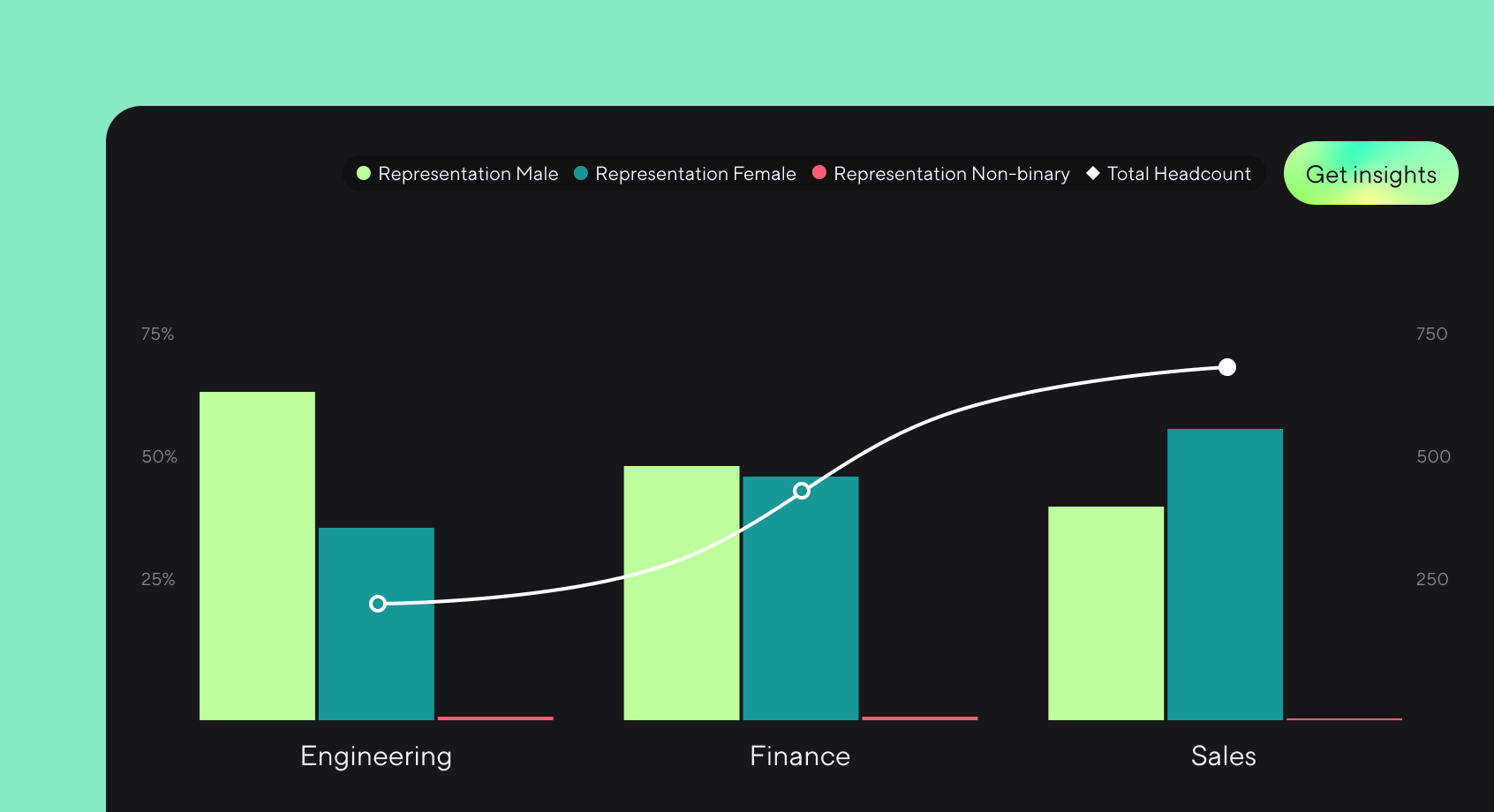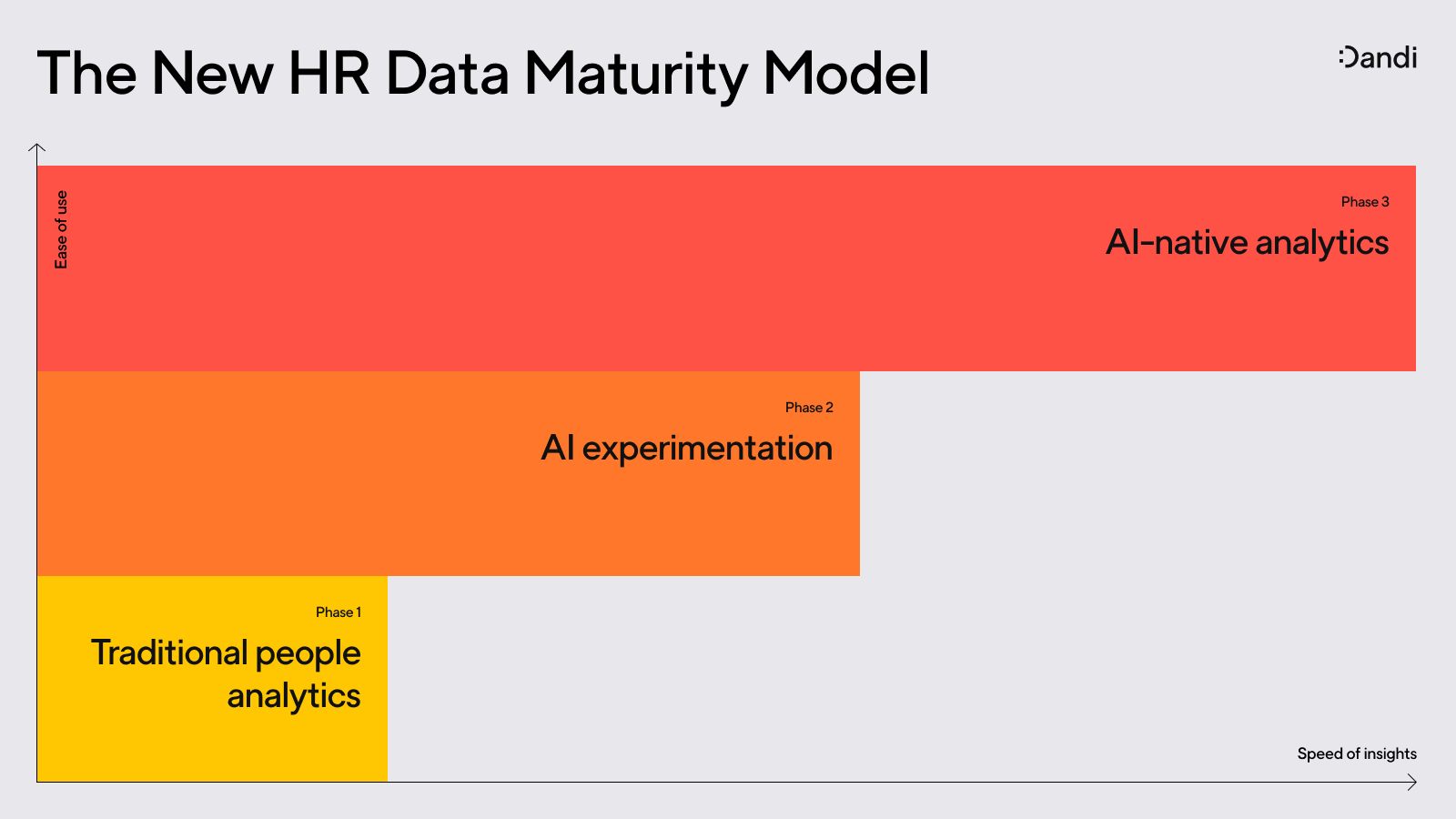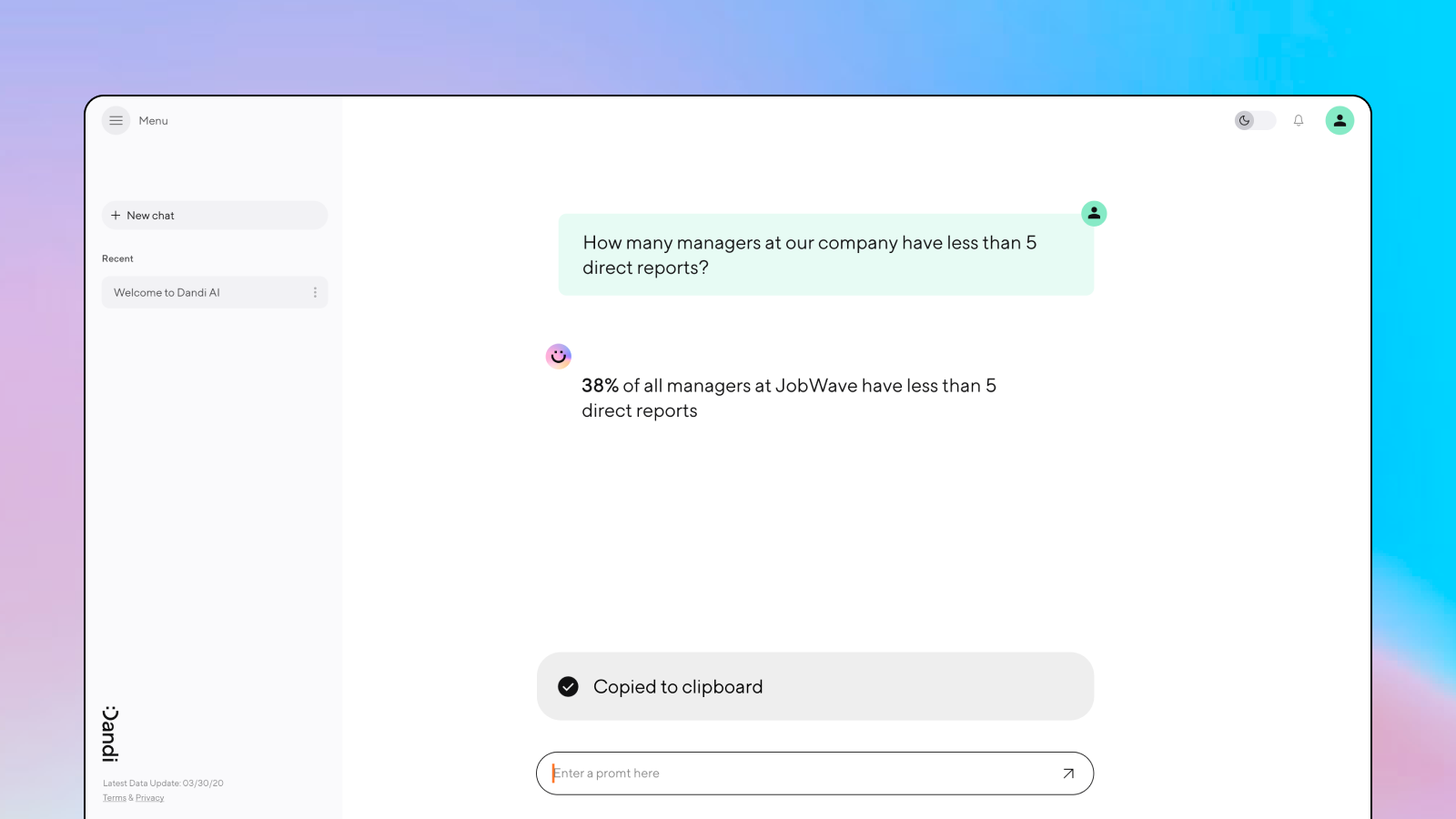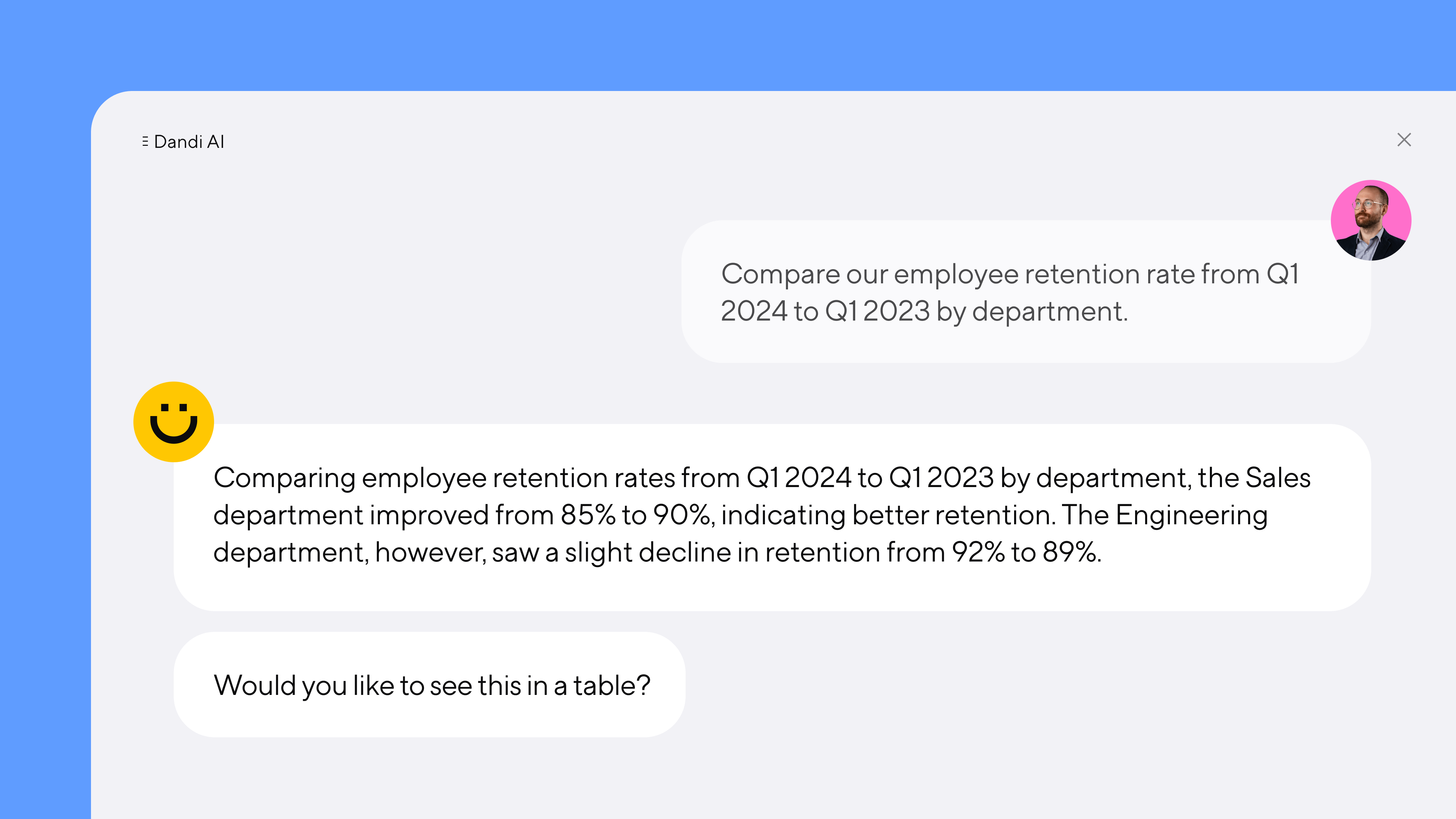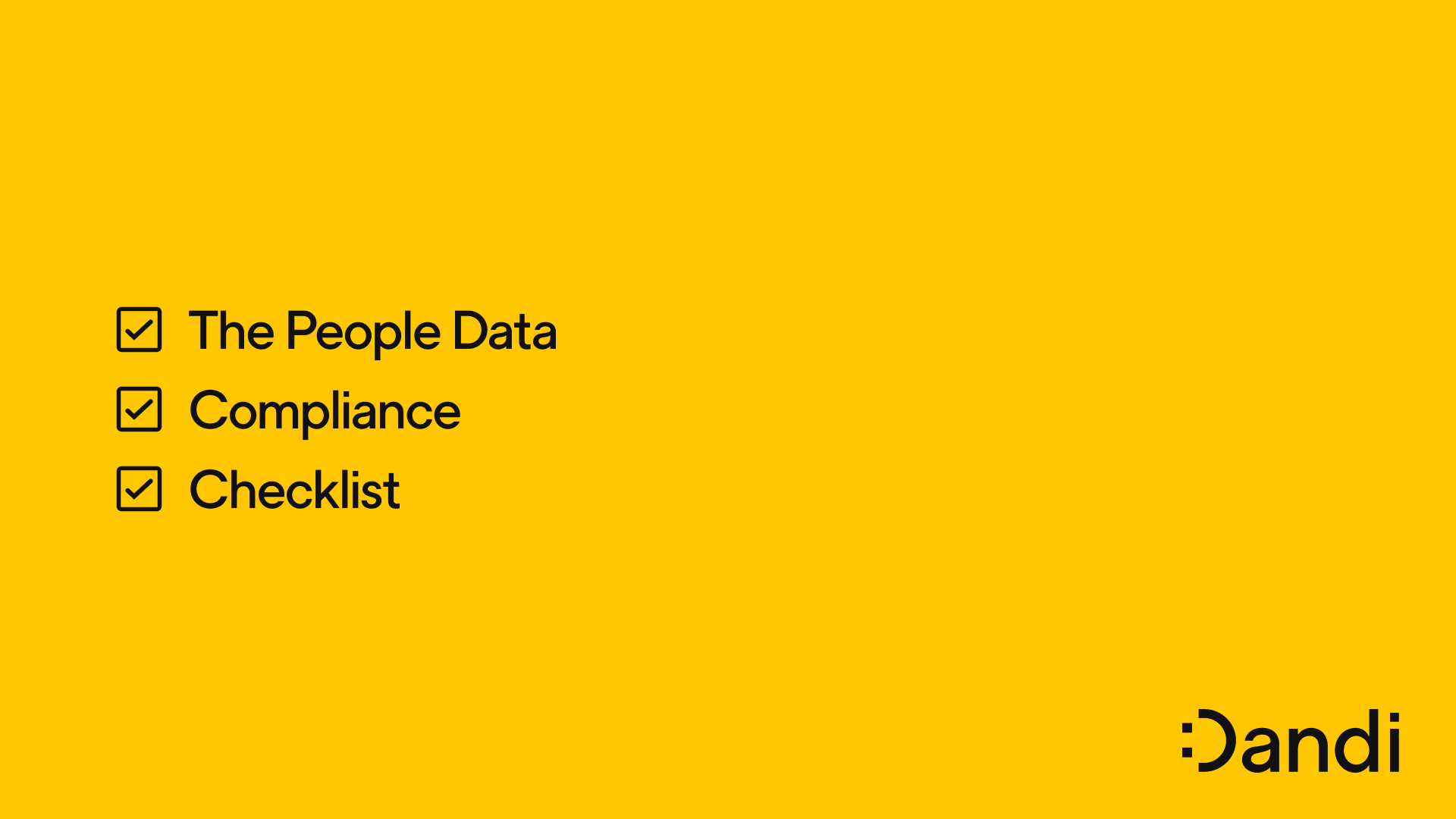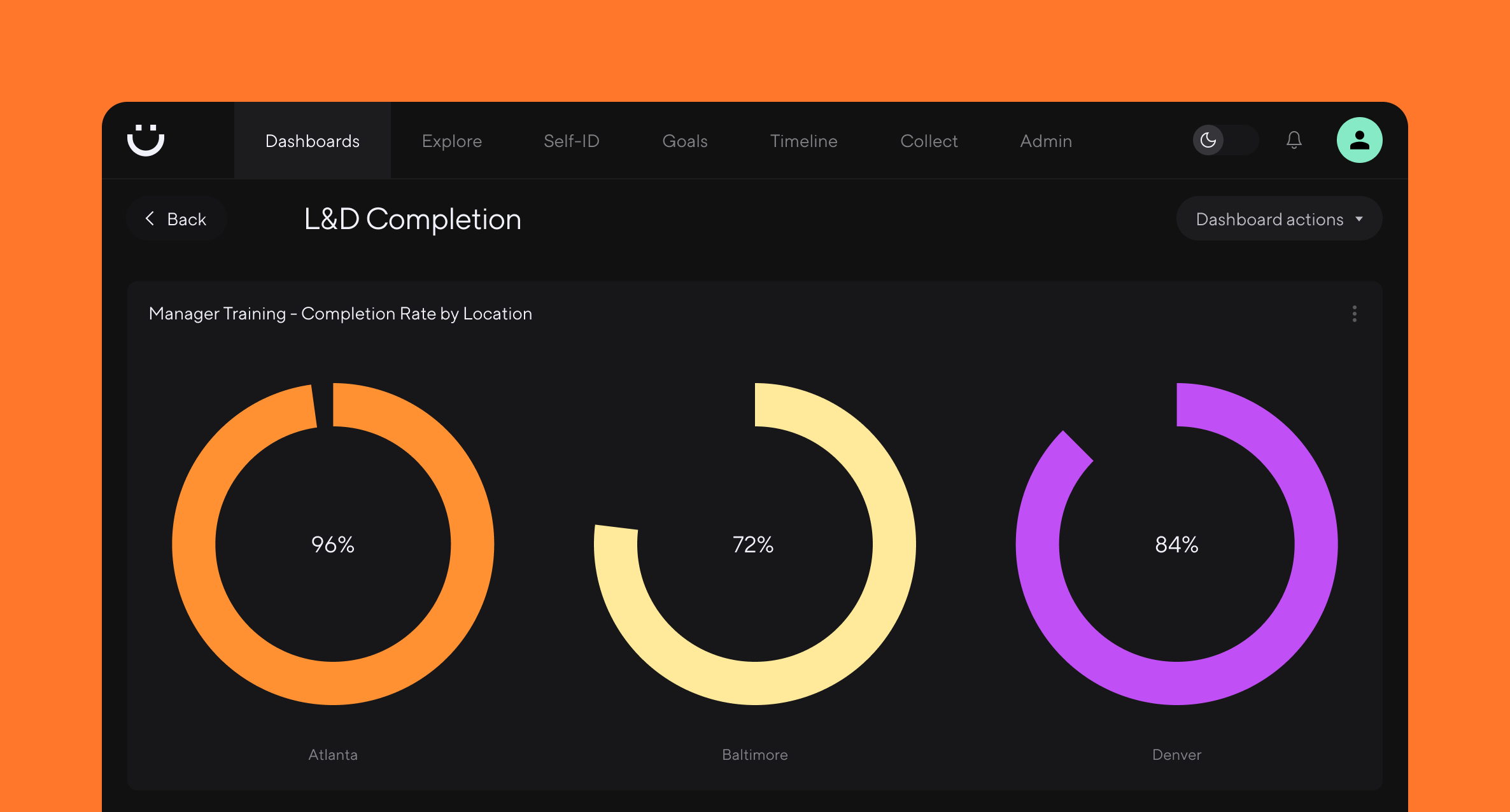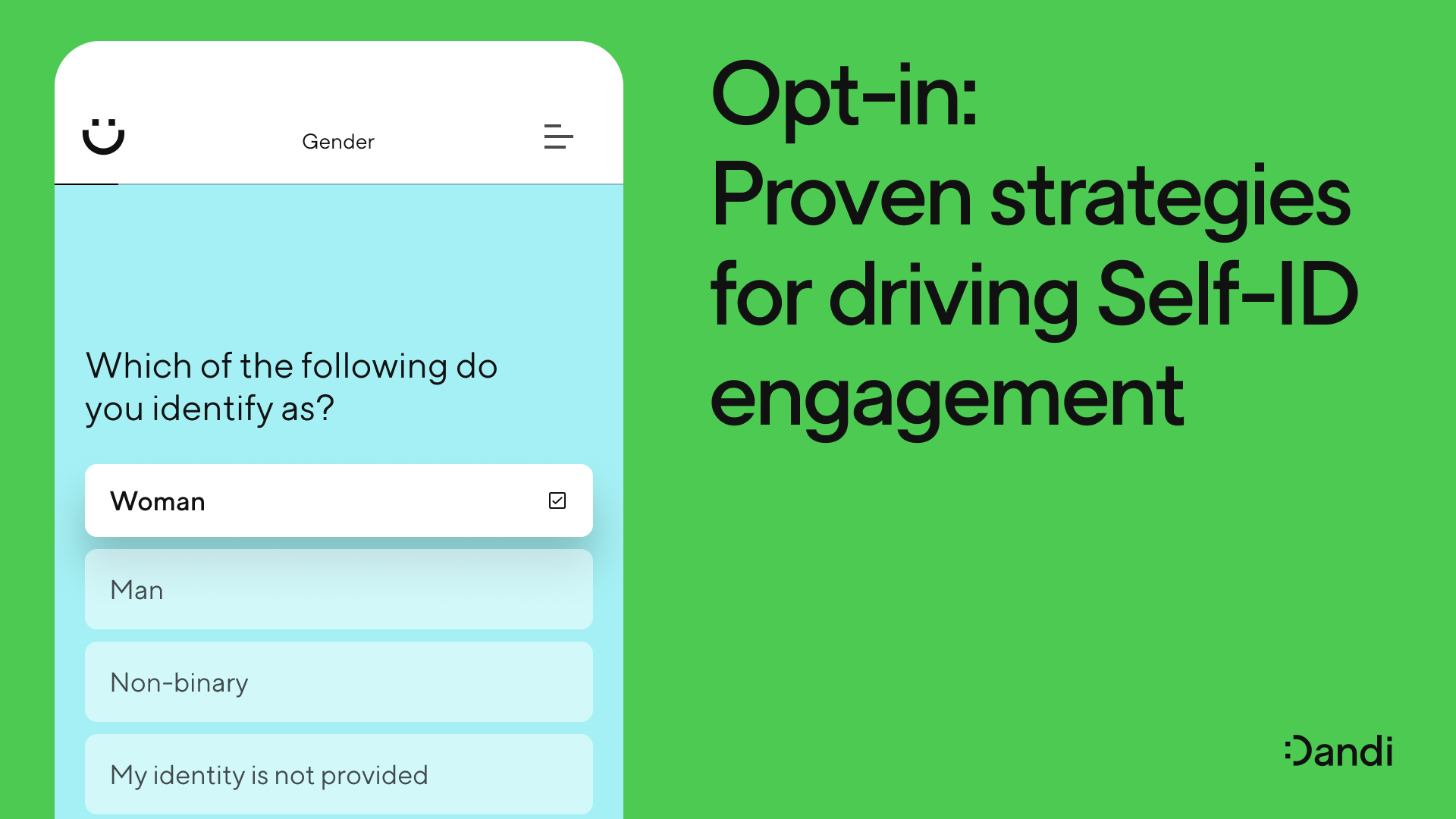Getting realistic about DEI goals: 5 best practice actions

Camille Hogg, PhD – May 17th, 2023
To succeed in DEI, organizations need to set data-driven goals that are clear, actionable, and specific. This article explains 5 key areas of focus.
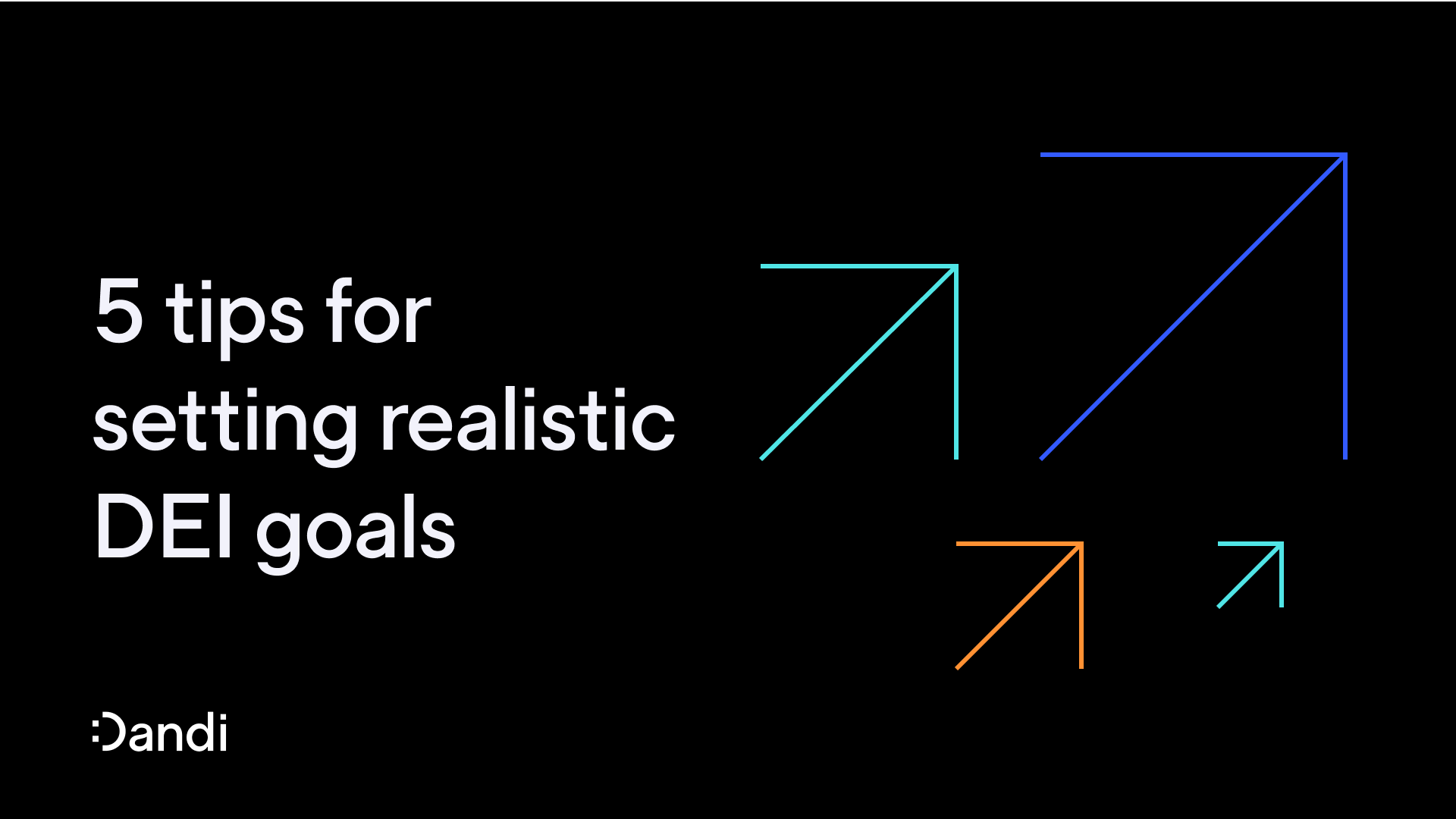
Elon Musk achieved instant infamy when he finally stepped up to lead Twitter last year. Just months after stepping into the role as the social media platform’s CEO, he fired over 50% of its workforce, including 93% of the DEI team.
His move was just one of the latest in a rising tide of DEI layoffs, with Amazon, Nike, Walmart, and Meta all making similar bets. And while most companies have kept quiet on the reason for cutting a vital business function, we think goals had a lot to do with the decision.
According to 2023 data from Gartner, 51% of DEI leaders say their biggest challenge is getting business leaders to take ownership. A 2021 report found that 76% of organizations don’t set any goals when it comes to DEI. Another 2021 report by compensation platform Salary.com, found that when organizations did set goals, less than 2% of them could say they’re achieving them with any confidence.
In the wake of the layoffs, Amazon spokesperson Brad Glasserer insisted that the global company’s DEI priorities “have not changed” even though employees had exposed the organization’s continual failure of a goal to increase leadership diversity a couple of years prior. Meanwhile at Twitter, employees have claimed that the social media corporation has stopped setting DEI goals at all.
To succeed in DEI, organizations need to set data-driven near-, mid- and long-term goals that are clear, actionable, and specific. Without them, progress will be hard to see, measure, and sustain.
5 best practice actions for setting DEI goals
Organizations globally struggle with an expectation gap on setting DEI goals. Faced with huge targets, they tend to either set goals that are far too ambitious, or struggle to set them at all. Both routes lead to a series of inconsistent and unconnected efforts that hamper progress on DEI.
Decades of research into goal-setting theory tells us that the most effective goals must be achievable, but feel challenging enough to keep us motivated. They also need to be timely, measurable and specific—it’s the same reason why setting a New Year’s resolution to lose weight is far less likely to garner the results you want than setting a goal of going to the gym three times a week.
When setting DEI goals, the same criteria apply. Setting clear, actionable DEI goals that lead to measurable, sustainable progress is the only way to gain momentum on your biggest DEI challenges.
Business alignment, ownership, and data-driven measurement are key.
Setting clear, actionable DEI goals that lead to measurable, sustainable progress is the only way to gain momentum on your biggest DEI challenges.
1. Map goals to larger strategic objectives
We know that building diverse and inclusive organizations is how we win in the future. But historically, DEI has sat on the sidelines of the organization. This makes it much harder to see how DEI goals connect to strategic objectives, or even how DEI moves your organization forward.
Mapping DEI goals to your organization’s larger strategic priorities requires you to connect it to your organization’s mission and values, explained Carol Watson, Chief Inclusion Officer at global communications agency BCW Global, in our latest ebook, The essential guide to data-driven DEI transformation.
“[DEI] needs to be hardwired into the spine of the organization,” she said. “But people won’t change unless you pay attention to the things they care about. In a professional services company, that could be clients. In retail, it could be sales merchandising and product.
“Aligning DEI with business-critical outcomes is how you get people to care, because you’re supporting what your organization values as important—whether that’s performance, shifting culture, mirroring the marketplace. All of those could be true, depending on who the stakeholder is, and how you adjust your conversation. But when everyone understands that it’s critical to your business, everyone becomes accountable.”

Aligning DEI with business-critical outcomes is how you get people to care, because you’re supporting what your organization values as important.
Carol WatsonChief Inclusion Officer, BCW Global
2. Make sure goals are achievable—and data-driven
When setting DEI goals, organizations often unintentionally shoot for the moon—and miss. They set goals to ‘improve diversity’, or ‘close the gender pay gap’, without any clear idea of how to get there.
Don’t get us wrong—these are great long-term visions. But without specificity and clarity, even the most well-intentioned of goals will fail to launch, because they’re so big and overwhelming that organizations find it difficult to know where to start. And when organizations can’t start, they can’t make sustainable, visible progress. Over time, this will lead to loss of trust among their employees.
Setting achievable, measurable goals on DEI means breaking down huge, overwhelming goals into smaller steps that scaffold progress.
Setting achievable, measurable goals on DEI means breaking down huge, overwhelming goals into smaller steps that scaffold progress. Data and intersectional measurement are the foundation of this process. To set more actionable DEI goals, it might help to take a product-based approach that focuses on continuous improvement. When setting new goals, use data to evaluate why the goal is meaningful, and identify who, what, where, and when. Then, re-evaluate your goal progress continuously based on real-time data:
-
What is the key problem we’re trying to solve?
-
How will achieving this goal contribute to our organization?
-
How will we measure success?
-
What are the KPIs that our approach to achieve our goal is working?
-
Whose input do we need to achieve this goal?
-
How often will we evaluate and adjust this goal?
3. Define ownership at a department or team level
DEI won’t work long-term if it’s solely the responsibility of your DEI or HR team—it’s a collaborative, cross-functional effort that requires the input of the whole organization. The best way to get people on board is by creating greater ownership of goals at a department or team-level.
In the workplace, research shows that making goals transparent to the entire business is a strong factor in their successful achievement. Creating a set of quarterly KPIs that dovetail with each department’s strategic goals and having teams report upwards and laterally on their progress will scale ownership of DEI across the organization while keeping it central to each team’s day-to-day operations.
Equipping teams with the right data is key to maintaining forward momentum.
“We meet with each leader and review their data, looking at key metrics like retention data in depth,” explained DEI expert Lily Lamboy in our recent ebook. “We then set KPIs that help each unit reflect on their progress. In reality, they’re usually a series of yes/no questions: Did everyone in your unit go to hiring manager training? Did you do a quarterly presentation of your DEI data to employees? This creates observable, process-driven progress and centers DEI as a business priority.
“When everyone can say they hit 100% of their goals, it creates a sense of positive forward momentum, meaning we can set more complex, ambitious KPIs next year.”
Equipping teams with the right data is key to maintaining forward momentum. Giving key stakeholders within each department or team access to DEI data analytics will help teams review their progress more regularly, and foster further ownership for DEI goal setting and accomplishment.
4. Communicate progress, continuously
To make progress on DEI, we need to talk about it—all the time. And that goes for internally as well as externally.
Communicating goals and goal progress isn’t just essential for showing employees the progress you’ve made, it’s vital for creating employee buy-in, and ensuring that every unit of your business is pulling in the same direction.
Taking a data-driven approach to reporting on your progress will help employees connect your DEI program to tangible results and keep its importance top of mind. Use company all hands meetings and internal messaging channels to keep employees in the loop about your organization’s progress. Meanwhile, giving employees access to data dashboards so they can see your progress in action will help further trust and transparency.
But while it’s natural to want to focus on your progress and successes, beware of only showing your employees the DEI highlight reel. Maintaining trust and progress on DEI only works when you’re transparent about the things that aren’t going well, as much as the ones that are. Being honest about missing a goal, or an emerging pay gap, for example, and showing the data behind it, helps build understanding, and may even lead to some creative suggestions.
Communicating goals and goal progress is vital for creating employee buy-in, and ensuring that every unit of your business is pulling in the same direction.
5. Measure, adjust, repeat
Feedback is essential to effective goal-setting. Data—both quantitative and qualitative—is your feedback for measuring whether or not your DEI efforts are working. It tells you the impact of your actions, when it’s time to set new goals, and how to course-correct the ones that have veered off-piste.
But much like setting goals themselves, feedback must be specific and actionable in order for organizations to use it to its full advantage. And often in DEI, organizations use their big-picture metrics, like representation, which is unlikely to give them a true picture of their actual progress.
In reality, it’s far more impactful to drill down into your data using intersectional measurement to get a more accurate view of your progress. Continuously evaluate your goal progress by segmenting your data by dimensions of diversity, business units, office location, and different areas of the employee lifecycle, like compensation or promotion rates, to understand what’s working, and what needs adjusting.
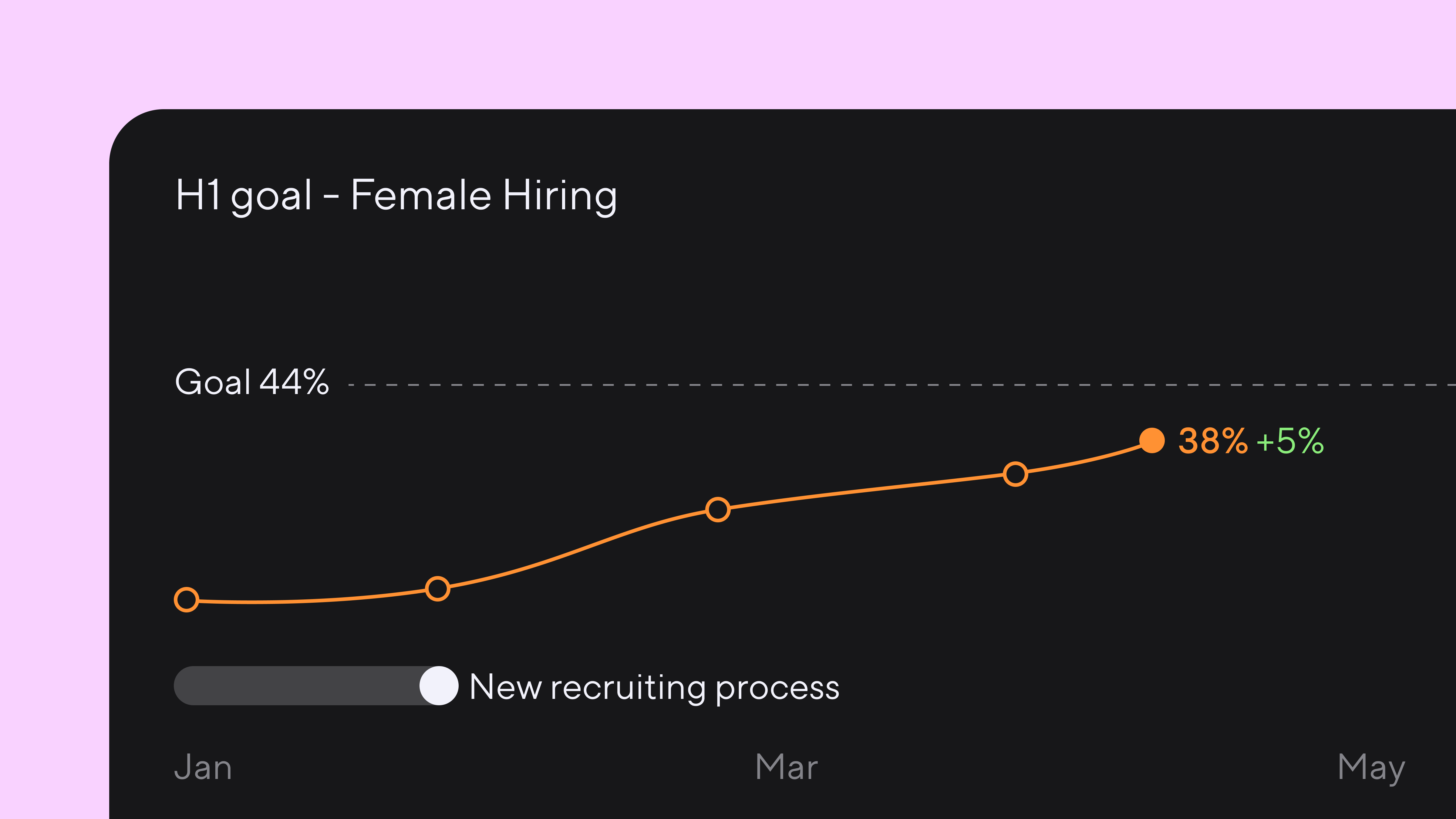
Getting data-driven on DEI goals
Ultimately, creating a set of clear, shared DEI goals can help organizations drive measurable, visible progress on DEI. Setting goals—big and small—upfront will not only give you a direction of travel, but it will also provide the roadmap for progress, drive ownership, and scale continuous, sustainable progress across your organization.
But data is key to making doing this work work long-term. Dandi’s real-time, intersectional analytics platform means organizations like BCW Global, Blue Shield, and Braze have complete oversight of where their DEI program is working—and where it isn’t—to set and meet goals that scaffold long-term progress.
More from the blog
Announcing more powerful Dandi data visualizations
Team Dandi - Oct 23rd, 2024
The New Maturity Model for HR Data
Catherine Tansey - Sep 5th, 2024
Buyer’s Guide: AI for HR Data
Catherine Tansey - Jul 24th, 2024
Powerful people insights, 3X faster
Team Dandi - Jun 18th, 2024
Dandi Insights: In-Person vs. Remote
Catherine Tansey - Jun 10th, 2024
Introducing Dandi AI for HR Data
Team Dandi - May 22nd, 2024
5 essential talent and development dashboards
Catherine Tansey - May 1st, 2024
The people data compliance checklist
Catherine Tansey - Apr 17th, 2024
5 essential EX dashboards
Catherine Tansey - Apr 10th, 2024
Proven strategies for boosting engagement in self-ID campaigns
Catherine Tansey - Mar 27th, 2024
